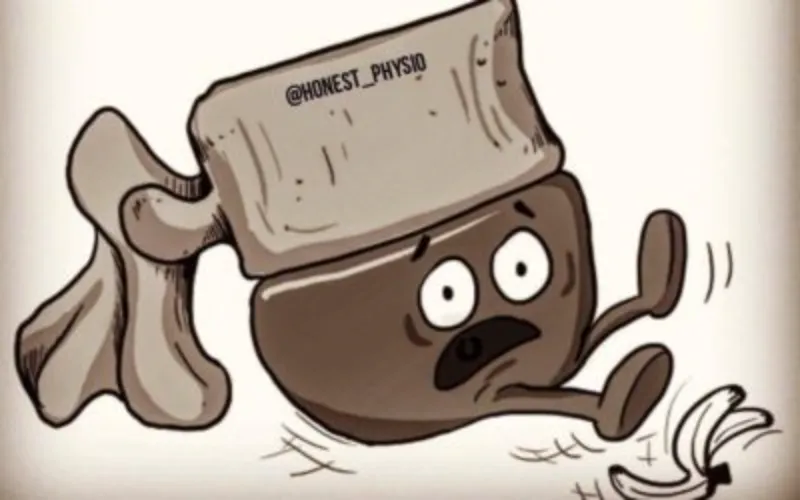A common story we hear from patients suffering from back pain is “I think I’ve slipped a disc”.
DISCS DON’T SLIP – they never have and they never will!
My main pet hate about the use of the term “slipped disc” is that it makes your discs sound like a bar of soap that’s going to pop right out of your back as soon as you bend forward.
This can give people the impression that their discs are very fragile structures that are easily damaged and need protecting which can lead to some people being very afraid of moving and bending which in turn can make their pain worse and prevent their recovery.
So, let’s have a look at what these discs are and see if they are as fragile and vulnerable as people think.
There are 23 intervertebral discs in your spine that sit in between your vertebra each one consists of 3 components:
- 2 ENDPLATES (2 PLATES THAT VERY STRONGLY ATTACH YOUR DISC TO THE VERTEBRA ABOVE AND BELOW)
- THE ANNULUS (THE STRONG CONNECTIVE TISSUE THAT WRAPS AROUND THE SIDES)
- THE NUCLEUS (THE STUFF IN THE MIDDLE)
They work as shock absorbers, allow movement to occur between vertebra and also work as a hydraulic jack when compressed.
These discs can change and we sometimes see some of the following changes to discs when we look at MRI scans of your spine however they never slip:
- ANNULAR TEAR- A TEAR IN EITHER INNER OR OUTER FIBRES WALLS OF THE DISC
- DISC BULGE – WHERE LESS THAN 25% OF THE DISC MATERIAL PUSHES OUT OF THE NORMAL AREA OF THE DISC
- DISC PROTRUSION – WHERE MORE THAN 25% OF THE DISC MATERIAL IS PUSHING OUT
- HERNIATION – WHERE SOME OF THE NUCLEUS HAS ESCAPED FROM THE DISC
Now it’s worth pointing out that only around 5-10% of all the people with back pain will have structural issues that we can relate to their back pain and only a small percentage of these will be due to issues with the lumbar discs.
In addition to this we often see disc bulges and protrusions in lumbar discs in people who don’t have any back pain at all and in fact these changes seem to occur more often as we get older.
We also know that depending on which direction disc bulges and protrusions are pushing out, your body’s immune system has the ability to remodel the disc by eating away any excess material pushing out which can reduce and remove the bulge or protrusion over time.
So in summary:
- DISCS DEFINITELY DO NOT SLIP IT’S LITERALLY IMPOSSIBLE
- DISCS ARE VERY STRONG RESILIENT STRUCTURES
- THEY CAN TEAR BULGE, PROTRUDE AND SOMETIMES HERNIATE
- THESE CHANGES IN THE DISCS DON’T ALWAYS CAUSE PAIN AND WE SEE THEM MORE FREQUENTLY IN PEOPLE AS THEY AGE
- ONLY A REALLY SMALL AMOUNT OF PATIENTS WITH BACK PAIN CAN WE BE SURE THE DISC IS THE SOURCE OF SYMPTOMS (LESS THAN 5-10%)
- YOUR DISCS CAN HEAL AND YOUR BODY CAN REMODEL THE DISC OVER TIME REDUCING OR REMOVING ENTIRELY THE BULGE OR PROTRUSION.
If you are experiencing back pain or sciatica (pain into your leg or buttock) it’s important to get it assessed by a therapist. There are several symptoms and tests that we can do to give you a good idea whether we think your discs maybe be involved and what you can do to help reduce your pain and kickstart your recovery.
To book an appointment with one of our therapists you can call our reception team on 01539 725220 or click here to book online.
Written by: Richard Clarke MCSP Bsc, Msc Physiotherapy
